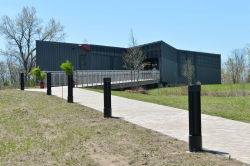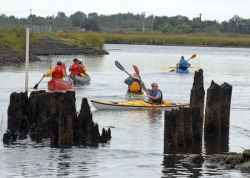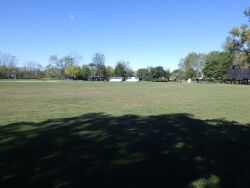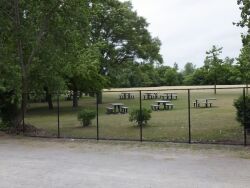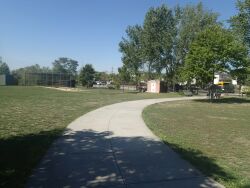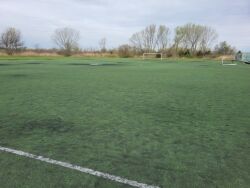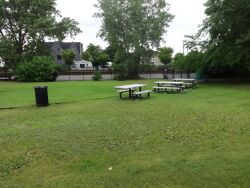Idlewild Park
Idlewild Park
What was here before?
This park is adjacent to the former site of the Idlewild Beach Golf Club—a privately owned full regulation golf club. Its location near major highways attracted many golfers from Brooklyn and Queens. Its amenities included a club house and restaurants.
How did this site become a park?
NYC Parks acquired the property in three stages between 1956 and 1964. The first parcel was conveyed to Parks through an agreement reached in 1956 with the Port Authority of New York and New Jersey. In 1958, the Board of Estimate assigned additional acreage to the area. The final addition occurred in 1964 through the purchase of private property. Together, the parcels form a large area of 224.8 acres lying on the northwest border of John F. Kennedy Airport.
As one of the largest remaining saltwater marshes in Queens, Idlewild Park gives visitors a unique window to one of the New York City’s many aquatic habitats while also playing a vital role in our water system. With kayaking and canoeing, outdoor enthusiasts can also take to the water at the park’s launch.
The waters along the Idlewild Park Preserve, not only provide a natural backdrop to the city, but also act as a natural filtration system for Queens’ groundwater, preventing any contaminants from entering Jamaica Bay. This not only improves the water quality of the area, but also helps to keep the ocean from flooding the southern half of Queens and parts of Brooklyn. Salt marshes also help reduce water erosion.
Idlewild Park is a gateway into Jamaica Bay and the water provides an astounding view of surrounding habitats, including freshwater and tidal wetlands, in addition to also the tributaries of Hook Creek. The bay is home to many different kinds of birds and marine life, including egrets, ibis, and herons, which make up 25 percent of the northeast Atlantic population.
In 2022 a state-of-the art Environmental Center with exhibition and display space; two classrooms for up to thirty students each (combinable into one space); an outdoor covered teaching area.
What is this park named for?
A 1963 NY Times article states that “The name Idlewild is believed to have been inspired by the fact that the site at the time was wild and that the hotel and park constituted a recreational facility for the idle rich.”
Construction on Idlewild International Airport (presently John F. Kennedy International Airport renamed in 1963) began in 1942. The airport took its name from the Idlewild Golf Course that it replaced. Planning began during the administration of Mayor Fiorello La Guardia and called for 1,000 acres of development. After six years of construction, the airport opened on July 1, 1948.
The airport’s design was extremely unique and modern. Because of airline requests, the airport’s runways were laid out in many directions to allow for changing winds. The center of the airport housed terminals and parking lots, which alone encompassed an area greater than La Guardia Airport.
Idlewild was home to the first jet service offered by an American carrier, Pan American Airways. It was also the first airport to encourage airlines to build their own terminals. The airlines responded to the challenge with vigor, building many incredibly modern structures. Most notably, the Trans World Airlines terminal, designed by architect Eero Saarinen, captured the spirit of air travel during the 1960’s. During the past 50 years, the airport’s acreage has multiplied by five times.
Check out your park's Vital Signs
Clean & Safe
Green & Resilient
Empowered & Engaged Users
Share your feedback or learn more about how this park is part of a
Vital Park System

